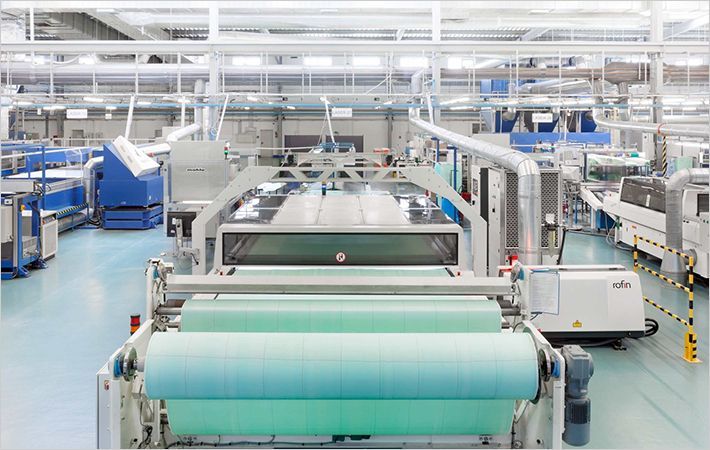Silver nanoparticles can have a severe environmental impact if their utilisation in clothing continues to increase. If everyone buys one silver nanoparticle-treated sock a year, the silver concentration in waste water treatment plant sludge can double. If the sludge is subsequently used as fertilizer, the silver can cause long-term damage to agricultural land. These are the results of a study conducted by Chalmers University's researcher Rickard Arvidsson.
Rickard Arvidsson recently defended his doctoral thesis, which addressed the risks associated with nanomaterials – a field with a great many knowledge gaps. He has developed new methods to assess the risks of nanomaterials, as well as used the methods on a few specific materials such as silver nanoparticles.Silver nanoparticles can have a severe environmental impact if their utilisation in clothing continues to increase. If everyone buys one silver nanoparticle-treated sock a year, the silver #
Silver nanoparticles have an antibacterial effect, and are used in a variety of consumer products such as workout clothing to prevent the smell of sweat. When the clothes are washed, nanoparticles are released and enter waste water treatment plants through waste water. The particles release silver ions that cannot be broken down at waste water treatment plants or in nature. The silver ions are toxic to many organisms.
"Clothing is considered to be a large source of nanosilver emissions already," says Rickard Arvidsson. "If silver usage in clothing continues to increase, the consequences for the environment can be major. For example, silver can accumulate in soil if sludge from waste water treatment plants is used as fertilizer, which can result in long-term damage to soil ecosystems."
Utilising sludge as fertilizer in soil is a way to restore phosphorous from waste water to agricultural land. There is a global shortage of phosphorous, but if sludge is to be used as fertilizer, contaminated content must remain at a low level.
Rickard Arvidsson conducted a study at Gothenburg's waste water treatment plant in Sweden. The study shows that the effect on sludge, and agricultural land if sludge is used as fertilizer, is entirely dependent on the amount of silver that manufacturers use in clothing. The silver concentration in the examined clothing varied by a factor of one million – between 0.003 mg/kg and 1400 mg/kg. With the lowest concentration, there would not be an observable effect on sludge and soil even if the utilisation of silver in clothing increased significantly.
"With the highest concentration, however, it would suffice if all of the city's residents bought and used one silver nanoparticle-treated sock a year for the silver concentration in waste water treatment plant sludge to double," says Rickard Arvidsson.
"Using silver in clothing is a new technology, and it is still difficult to ascertain patterns for how much is being used. However, if the negative environmental impact is to be avoided, either the silver concentration in clothing or consumption of silver nanoparticle-treated clothing must be limited."
Silver nanoparticles release silver ions, which are toxic to both bacteria and several higher organisms. Usage of silver nanoparticles as antibacterial agents has increased the past few years in a variety of consumer products such as clothing. The particles are generally quickly washed out of fabrics or are broken down to ions, and the silver can be completely absent after ten washes. The particles enter waste water treatment plants through waste water. The silver cannot be extracted at the plants and therefore it ends up in the sludge or in the watercourses.
Emission of silver ions entails several serious problems:
• It is a long-lived substance that is toxic at low concentrations for many bacteria and aquatic organisms.
• There is a fear that it causes resistance to antibiotics in bacteria.
• It can disrupt the biological treatment process at waste water treatment plants.
• Global silver resources are very limited. At the current mining rate, the existing silver supply may be depleted within 30 years, so it will become even more important to recycle silver – which is impossible when it is used in clothing since it ends up in waste water. Silver is especially important for renewable energy technology, for example solar cells and solar power plants
Chalmers University

